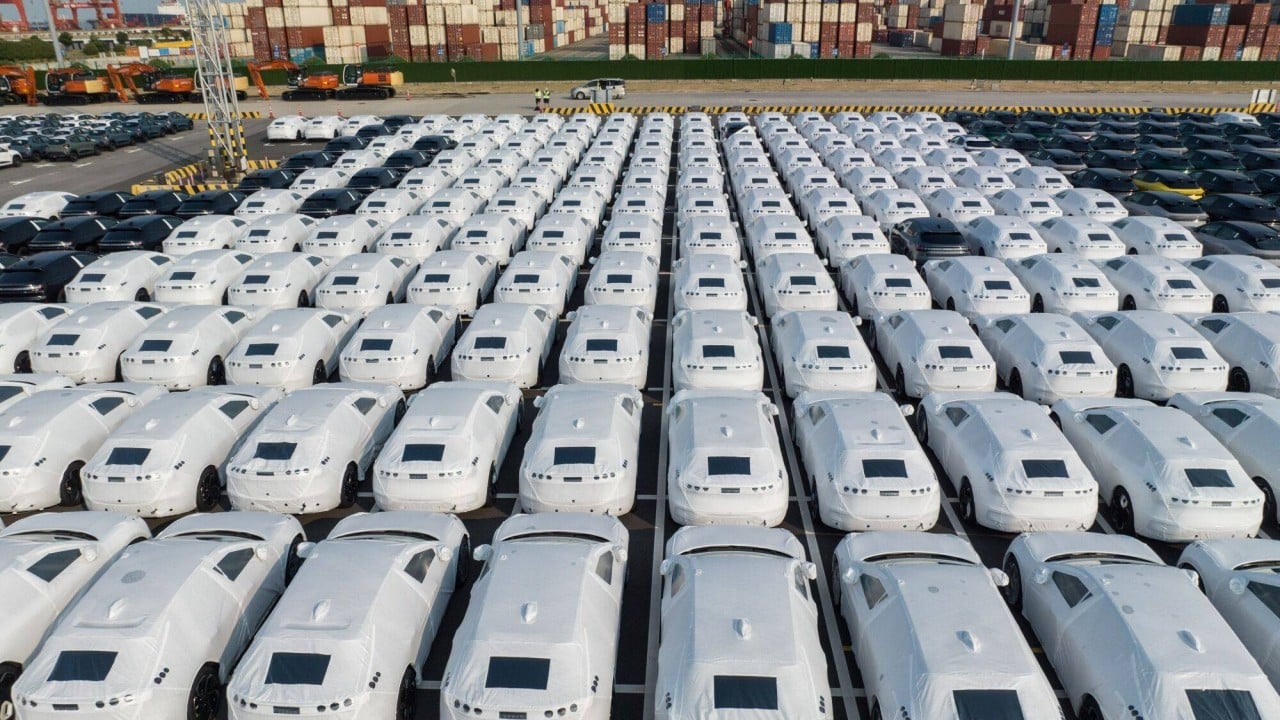China’s economy seeing ‘seismic shifts’ and imbalances like nothing Beijing predicted, senior economist says
The sweeping challenges that China is contending with have far exceeded Beijing’s predictions as the economy continues to navigate an “imbalance/disequilibrium”, according to a leading economist who also stressed that – in light of these outsized factors – achieving 5.3 per cent growth in the first quarter was an odds-defying feat.
“Covid’s scarring effect has been deeper and broader than expected. Structural adjustments and upgrades are occurring quicker than planned. The fiscal standing of local governments is deteriorating quicker than thought,” said Liu Yuanchun, president of the Shanghai University of Finance and Economics.
“Also, seismic shifts, unseen for 100 years across the globe, are accelerating faster than predicted, with more non-economic risks emerging than economic risks,” the senior government adviser added, speaking at a forum in Shanghai on Tuesday.
Liu said China’s development in the recent past and the immediate future will be marked by such disequilibrium, and striking a new balance will take time.
He added that challenges arising in the post-pandemic era and from rivalries with other economic superpowers have been “more daunting” than those that unfolded a decade ago when China’s double-digit economic growth became a trend of the past, prompting President Xi Jinping to flag a “new normal” of moderating growth.
One indicator of the new uneven growth and transition has been overcapacity, with the producer price index declining in March by 2.8 per cent, year on year, while languishing in the negative range for the 17th straight month.
“There is no sign that the PPI drop will narrow, either seen from a yearly or quarterly comparison base,” Liu said. “With imbalance comes risks and adjustments.
“The supply-demand disequilibrium is there, with the first quarter’s utilisation rate at 73.6 per cent – about 7 percentage points lower than the high utilisation range. So, we have capacity sitting idle.”
He called for new ways of thinking to assess overcapacity in new and strategic industries, adding that drastic cost reductions, on the strength of China’s ultra-large market size and emerging new business models, should be factored in as the issue garners international attention.
Liu also warned that the consumer price index, which grew in March by 0.1 per cent, year on year, after expanding by 0.7 per cent in February, was way off the level required to attain a supply-demand balance of 2-3 per cent. Beijing’s 2024 inflation target is 3 per cent.
Liu’s comments came after China’s better-than-expected 5.3 per cent growth in the first quarter indicated that the economy was slowly regaining momentum but headwinds remained strong.
“[The growth speed] was a result not easily attained amid all of the risks,” Liu said.
Stephane Grand, founder of SJ Grand Financial and Tax Advisory, which serves small and medium-sized European and American enterprises in China, said that even with China’s 5.3 per cent growth, the benefits to those types of foreign firms “will not be immediate”.
“It will take a while, as people are still cautious,” Grand warned.
With a similar eye toward a future with persistent headwinds, Liu said the imbalance now engulfing the Chinese economy is to stay.
China’s GDP growth beat expectations – so why isn’t the reaction more upbeat?
China’s GDP growth beat expectations – so why isn’t the reaction more upbeat?
Specifically, Liu said, the property downturn has been deeper and more persistent than previous rounds.
Property-sector investments fell in the first quarter by 9.5 per cent, year by year, with total sales slumping by 27.6 per cent.
“These declines came on top of the deep distress we saw in 2023 and 2022,” Liu said. “The days of the property sector being a ‘super pillar’ are gone. It used to account for 10.9 per cent of the GDP, but the share tumbled to 5.85 per cent last year.”
And in China’s search for new pillars, he added, contributions from new, hi-tech sectors such as electric vehicles have yet to fill the void.
He also touched on how economic risks are expanding amid geopolitical uncertainties, noting how China’s trade has begun to favour developing economies and belt and road partners over destinations in the United States and European Union.
Still, some point to positive signs. Grand said interest among foreign small and medium-sized enterprises (SMEs) and their investments in China have been recovering in recent months.
After many clients in fashion, consulting, and the food and beverage industries left China in the past four years amid its Covid-related economic downturn and subsequent slow recovery, he said some investments are returning.
“We think those are delayed investments. Some businesses had been thinking about investing or coming back to China for at least half a year,” Grand said.
Grand added that new clients, which now account for a quarter of his firm’s total, are from industries ranging from cosmetics to aircraft financing, and that many of them are manufacturers returning to China.
And for SMEs, he said, the biggest determining factor in their business decisions is the state of the Chinese economy, rather than geopolitical risks.


